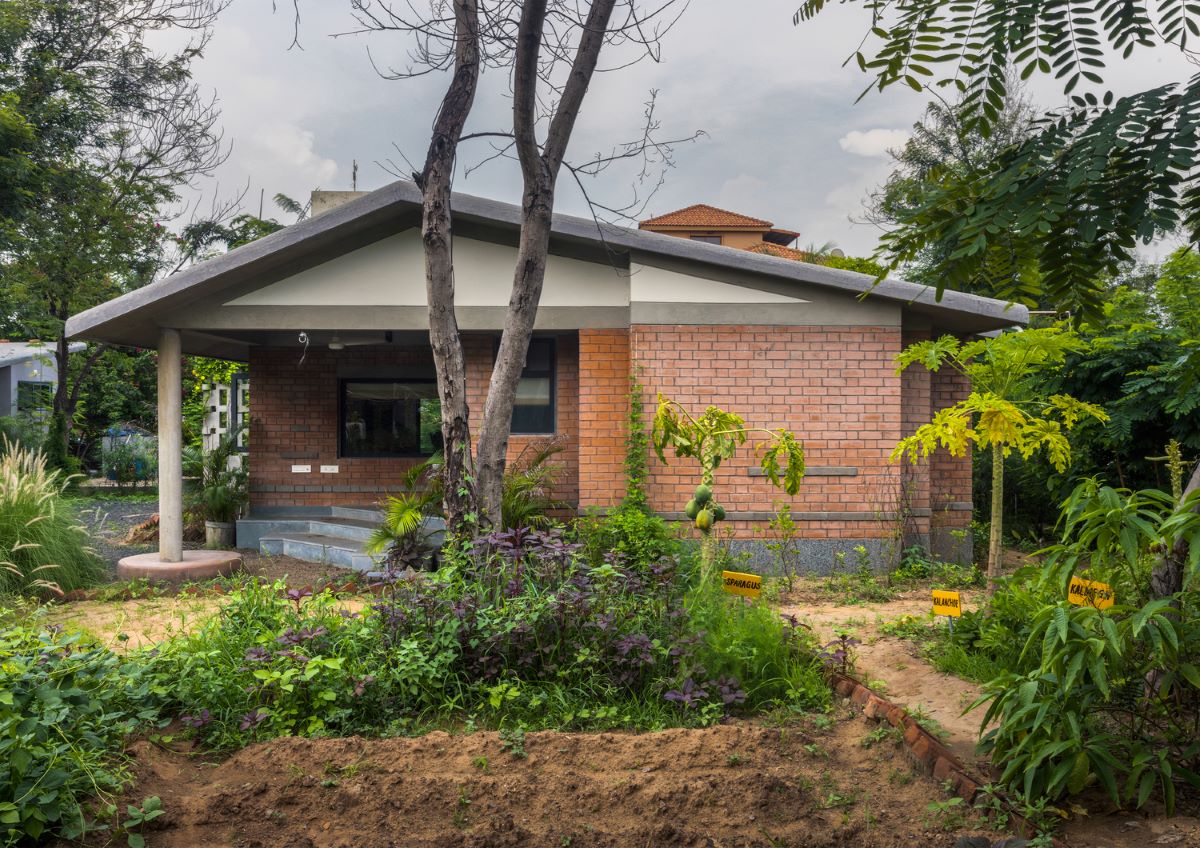Team Green Collars from R V College of Architecture, R V College of Engineering, and R V University was made up of 12 architecture students, 1 mechanical engineering student, and 1 spatial design (B. Des) student. They were mentored by Prof. Anupriya Saxena who acted as their faculty lead, with 3 other faculty members acting as advisors. They partnered with Zerund Bricks, who makes plastic embedded lightweight bricks, and the Centre for Green Building and Technology that specialises in bamboo construction. They worked on Ekagra, a Delhi Public School project for Gyandeep Foundation, that included a unique Research and Design Lab focused on sustainability and hands-on learning.
The project site is located in Nagaon, a flood-prone area in Assam that is also exposed to earthquakes. Team Green Collars developed design strategies to build resilience against these hazards. They located the building at the highest level of the site, with a high plinth for additional safety, where vulnerable services, cables etc. are located above the plinth level and coated and sealed with water-resistant materials. They also located a shelter for the livestock above the floodline on the site. They conducted seismic simulations to test their design of an RCC and bamboo framed structure with expansion joints, and achieved resilience to low-impact high-frequency earthquakes. Their comprehensive multi-hazard risk assessment led to a design that provided up to 4 days of autonomy with critical functions in case the building was cut off from utilities and services. They also detailed a response and recovery plan for disaster events.
With an iterative design approach that included a range of passive strategies like building orientation, shaded courtyards, careful window and shading design, clerestory windows for daylighting, envelope construction of Zerund Bricks, insulation, air-cavities, and bamboo sheets, they reduced the cooling load and provided comfort for 84% of the operation hours. For HVAC, they designed a VRV (Variable Refrigerant Volume) system with a DOAS (Dedicated Outdoor Air System) which provided efficient performance, temperature control for individual zones, and reduced the space requirements for services. Overall they achieved an EPI of 26.5 kWh/sqm per year, and a net-positive energy building with onsite renewable energy from PV panels and impulse turbines that generate energy during the monsoon rains. They also achieved a net-zero water-building design.
Their choice of materials including Zerund Bricks, bamboo frames and bamboo reinforcement, filler slabs, and bamboo trusses, resulted in an embodied carbon reduction of 124% for walls, 58% for floors and slabs, 79% for roofs, 104% for windows, 47% for structure.
They went beyond building design to innovate bamboo classroom furniture that also acted as an earthquake shelter and acoustic panels made of locally sourced materials such as bamboo mats, jute fibres, and rice husk boards with aluminium frames. Their integrated approach to design, material selection, and performance led to a 16% reduction in CapEX, and a 30% reduction in Opex. Team Green Collars demonstrated mastery over the 10 contests of Solar Decathlon India with innovative, affordable, and high performance solutions to tackle climate change.









One Response
congadulationsto RVCOAr